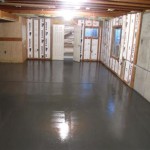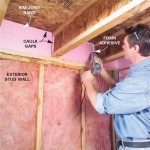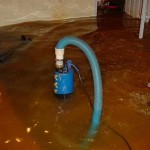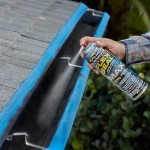How To Absorb Moisture In Basement
A damp basement is a common problem, but it can be a significant source of frustration for homeowners. Excessive moisture can lead to a variety of issues, including mold growth, structural damage, and unpleasant odors. Fortunately, there are several effective techniques to absorb moisture in a basement, helping to create a drier, healthier, and more enjoyable living space.
Understanding Basement Moisture
Before tackling the problem of moisture absorption, it's essential to understand its root causes. Basements are often susceptible to moisture due to their proximity to the ground, and factors like poor drainage, leaks, and inadequate ventilation can exacerbate the issue. Identifying the primary source of moisture is crucial for choosing the most effective solutions.
Dehumidifiers: Effective Moisture Removal
Dehumidifiers are one of the most common and efficient methods for absorbing moisture from a basement. These appliances function by drawing in humid air and passing it over a cooling coil where the moisture condenses into water. The condensed water is then collected in a reservoir or drained away. Dehumidifiers are particularly effective for removing moisture from the air, making them a valuable tool for controlling humidity levels.
When choosing a dehumidifier, it's important to consider factors like the size of the basement, the level of humidity, and the desired humidity level. Larger basements will generally require more powerful dehumidifiers. It's also crucial to ensure the dehumidifier has a drainage system to prevent water from overflowing.
Moisture-Absorbing Products: A Simple Solution
Another effective approach to reducing moisture is using moisture-absorbing products. These products, often available in granular or liquid form, work by drawing moisture from the air. They are particularly useful for small, localized areas where dehumidifiers might be less effective.
Common examples of moisture-absorbing products include:
- Desiccant packets: These small packets are often found in packaging to absorb moisture and prevent damage to goods. They can be placed in strategic locations around the basement to absorb excess moisture.
- Dehumidifying crystals: These crystals absorb water vapor from the air and can be placed in open containers or strategically placed around the basement. As the crystals absorb moisture, they become heavier and may need to be replaced or regenerated.
- Moisture-absorbing bags: These bags are filled with a desiccant material and can be hung or placed in areas where moisture is prevalent. They are often used for storing items such as clothing or electronics to prevent moisture damage.
Ventilation: A Key Component for Air Circulation
Proper ventilation is crucial for controlling moisture in a basement. Ventilation helps to remove humid air and replace it with drier air from outside. There are several ways to improve ventilation in a basement:
- Exhaust fans: Installing an exhaust fan in the basement can help to vent out humid air. The fan should be placed in an area where moisture is prevalent, such as near a window or a laundry room.
- Window vents: Open windows and vents can help to improve air circulation, allowing moist air to escape. This method is especially effective in areas with lower overall humidity levels.
- Basement windows: Ensure that basement windows are properly sealed to prevent moisture from entering. If windows are damaged or leaking, they should be repaired or replaced.
Addressing Underlying Moisture Sources
While dehumidifiers, moisture-absorbing products, and ventilation can be effective in reducing moisture, it's essential to address any underlying moisture sources to prevent recurring problems. This may involve:
- Improving drainage: Ensure that water is draining away from the foundation properly. This may involve cleaning gutters, grading the ground around the foundation, and installing perimeter drains.
- Repairing leaks: Inspect the basement for any leaks in pipes, windows, or the foundation. Repair or replace leaking components as necessary.
- Sealing cracks: Seal any cracks in the foundation or walls to prevent moisture from entering. Caulking or using other appropriate sealing materials can effectively prevent water intrusion.
Preventing Condensation: A Key Strategy
Condensation often occurs on cool surfaces in a basement, particularly during the winter months. This condensation is a result of warm, humid air coming into contact with cold surfaces, releasing its moisture. To minimize condensation, consider these strategies:
- Insulate walls and floors: Proper insulation can help prevent cold surfaces in the basement and reduce the likelihood of condensation. Insulation can be installed on walls, floors, and ceilings, depending on the specific needs of the basement.
- Use vapor barriers: Vapor barriers can be installed on basement walls to prevent moisture from migrating into the basement. These barriers are typically made of plastic sheeting and are installed during construction or renovation.
- Control humidity levels: Maintaining low humidity levels in the basement can significantly reduce condensation. This can be achieved through the use of dehumidifiers and proper ventilation.
Final Thoughts
Absorbing moisture in a basement is a multifaceted process that requires a comprehensive approach. By addressing the underlying causes of moisture, utilizing effective moisture-absorbing techniques, and implementing preventative measures, homeowners can effectively reduce moisture levels, creating a healthier, drier, and more comfortable basement space.

Get Rid Of Humidity In A Basement Without Dehumidifier

Moisture In Basements Causes And Solutions Umn Extension

How To Get Rid Of Humidity In A Basement Without Dehumidifier

How To Dehumidify A Room 8 Effective Methods Try

How To Keep A Basement Dry Without Dehumidifier Housefresh

How To Get Rid Of Basement Odor And Why It Smells In The First Place

Wet Basement Walls Causes Solutions Acculevel

How To Keep A Basement Dry Without Dehumidifier Housefresh

How To Get Rid Of Humidity In A Basement Without Dehumidifier

Take Care Of Moisture Issues Before Insulating The Basement








